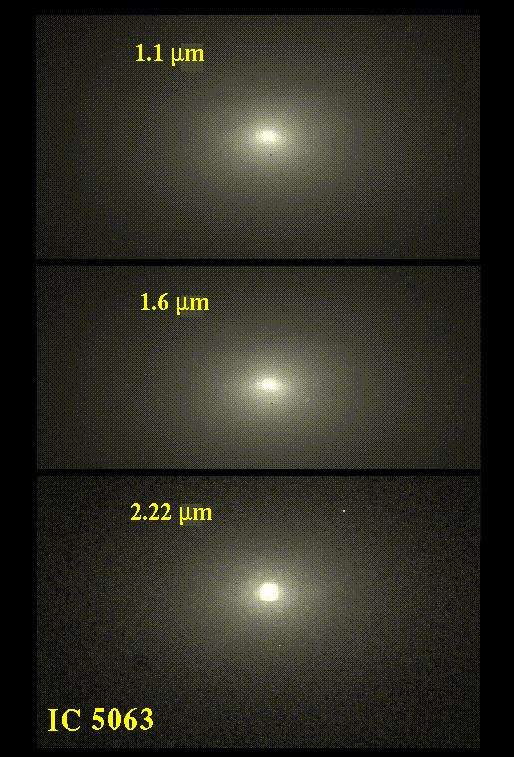
While many active nuclei announce their presence from a tiny, intense source of blue and ultraviolet light, some are hidden from our view by intervening dust - either surrounding the central engine or happening to lie somewhere else in front of it. Sometimes we have a clue to its existence, by seeing the effects of a strong source of ultraviolet and X-radiation on surrounding gas. IC 5063 exemplifies this situation, being known from optical observations as a type 2 Seyfert galaxy. This series of near-infrared images from NICMOS and the Hubble Space Telescope unveals a bright, heavily reddened central source. The absorbing effects of dust drop rapidly at longer wavelengths, as can be seen from the dust structure visible at the shortest wavelength (1.1 microns) and invisible at 2.2 microns. Only the flattened central concentration of stars appears at 1.1 and 1.6 microns, but at 2.2 microns, a brilliant central source appears. The source is bright enough to show diffraction rings, easily seen since the size of the diffraction pattern limiting the camera's resolution grows with wavelength. The investigators suggest that this infrared source may still not be the nucleus proper, but the immediately surrounding dust emitting at the high temperatures produced so close to the central object itself.
Data courtesy Varsha Kulkarni (Univ. of Arizona), Daniela Calzetti (Space Telescope Science Institute), STScI NICMOS Team, NICMOS Instrument Definition Team, and NASA. Their analysis was published in the Astrophysical Journal Letters 492, L121, 1998. The images have long dimensions of 19.2 arcseconds and are oriented with north at about 27 degrees clockwise from the top.